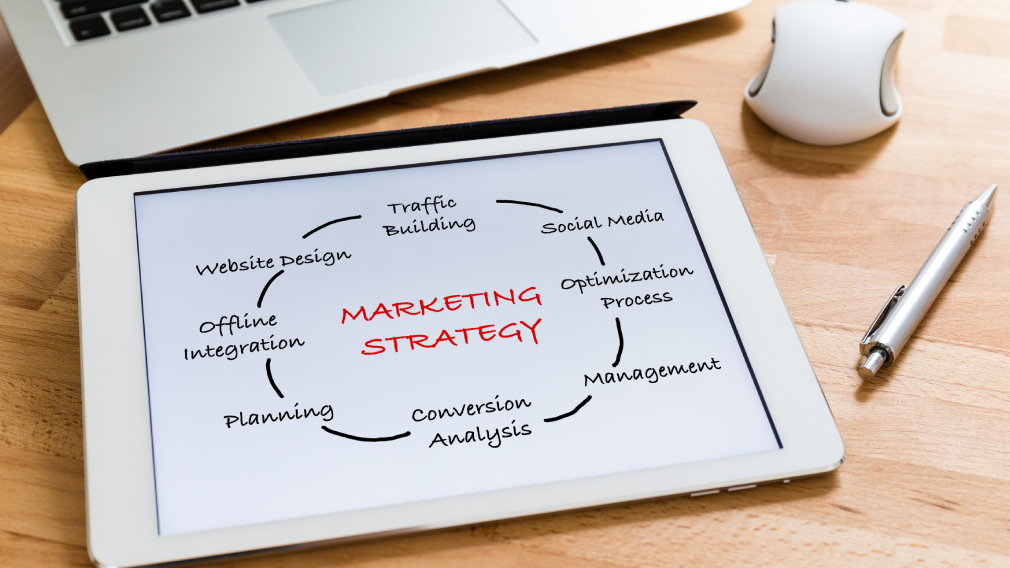When you consider how to choose the right marketing agency, it is natural to feel both optimistic and unsure at the same time. On one hand, partnering with an experienced agency can lead to significant revenue gains and a streamlined approach to attracting new customers. On the other hand, uncertainties about cost, expertise, and fit may create hesitation. In many cases, small business owners and marketing consultants are tasked with evaluating a range of agencies that promise big results. Sorting through the details can become overwhelming. This article will help you navigate the selection process with empathy and clarity, emphasizing the importance of establishing goals, examining agency expertise, and setting up a system for ongoing optimization. By following these steps, you can move forward with confidence, knowing you are building the foundation for a growth-focused partnership.
Recognize your marketing goals
Determining your primary objectives is the first step toward selecting an agency that can deliver on your needs. For many small businesses, the overarching goal might be to scale up revenue efficiently. For others, the main priority may include strengthening brand recognition or improving conversion rates. Regardless of your focus, clearly identifying your aims helps you evaluate an agency’s ability to support your vision.
Pinpoint urgent needs
Before finalizing any long-term contract, list the pressing challenges you face:
- Generating quality leads for your sales pipeline
- Increasing website traffic and user engagement
- Improving brand recall and credibility
- Enhancing conversion rates across multiple channels
These concerns are not simply bullet points, but unique struggles that can prevent you from achieving sustainable growth. By articulating them, you invite meaningful discussions with potential agencies about their proposed strategies to address your situation.
Use goal-setting frameworks
When clarifying your needs, you can adopt structured methods like SMART goals or OKRs. Both approaches use measurable targets to help guide your decision-making. By specifying precise metrics (such as increasing leads by 20% each quarter or boosting email open rates by 15% over six months), you equip yourself—and any prospective agency—with a clear roadmap. Having such clarity also lets you track your progress more effectively, ensuring that both you and your agency consistently move in the right direction.
Understand the growth system components
A scalable growth system involves strategically sequencing your marketing channels, allocating a realistic budget, and continuously optimizing your efforts. This system ensures you do not rely on a single tactic or platform. Instead, you combine multiple pieces—SEO, paid ads, email, conversion optimization, and more—to create a cohesive approach covering the entire customer journey.
Antilles’ outsourced marketing department model
Many businesses turn to an outsourced marketing department like Antilles, finding it to be an efficient way to manage these components under one umbrella. By leveraging external experts who coordinate strategy, creative, and execution, you minimize internal overhead and benefit from specialized insights across various disciplines.
Strategic sequencing
A key component of a robust growth system is the order in which you deploy marketing activities:
- Establish a solid foundation: Set up essential assets, including your website, messaging framework, and branding.
- Identify priority channels: Focus on one or two channels that align closely with your audience, whether that is search engines, social platforms, or offline events.
- Gradually expand activities: As results improve, integrate additional elements, such as email marketing and retargeting, to reach deeper into each stage of the marketing funnel.
Setting the proper sequence reduces wasteful spending, allowing every dollar to serve its highest purpose.
Budget allocation
Effectively distributing resources among your marketing channels can be challenging, especially when scaling. Consider:
- Direct costs (ad spend, tools, subscriptions)
- Agency fees (whether in project-based, retainer, or hybrid models)
- Unexpected costs (design updates, software licenses)
- Ongoing testing and optimization
If you need guidance on distributing funds among paid ads, SEO, and other initiatives, even a brief consultation with prospective agencies can help you gauge whether they can offer a balanced approach. For further insight, you can explore how to allocate a digital marketing budget, especially if you need a more comprehensive breakdown of possible spend categories.
Ongoing optimization
In a scalable system, optimization never stops. You track returns on each channel, as well as overall marketing performance, to see what sticks and what must be refined. Having a strong analytics setup, funnel mechanism, and attribution model will make or break your ability to improve. For practical advice on measuring or adjusting your campaigns, you can check how to measure roi from digital campaigns.
Compare pricing structures carefully
Choosing an agency is about more than talent and expertise—it is also about aligning budget constraints and revenue expectations. Pricing models can vary widely, each with its own strengths and challenges. A clear understanding of popular agency pricing structures helps you determine which model feels most appropriate for your situation.
Project-based pricing
Under this model, the agency sets a custom price for a specific project, with clear timelines and scope. According to research from ManyRequests, project-based pricing can deliver strong profit margins because you know exactly what you pay for. However, it may take more time and negotiation to finalize every project requirement. If your business values well-defined deliverables over an ongoing relationship, this could be a beneficial approach.
Monthly retainers
For ongoing marketing efforts, month-to-month retainers offer predictable revenue streams for the agency and consistent coverage for your brand. This work-for-hire arrangement asks you to pay a fixed monthly fee in return for a certain number of hours or tasks. Retainers are useful when your marketing objectives involve continuous, evolving projects—like content creation and campaign management.
Revenue share
In some scenarios, agencies might invest time and resources in exchange for a percentage of your revenue gains. This approach, as ManyRequests notes, can be lucrative when an agency’s services have a proven track record for driving results. Still, it also carries risk, requiring mutual trust and a robust system for verifying revenue.
Hybrid or value-based
For extraordinary flexibility, you can opt for a hybrid or value-based model. Hybrid pricing might combine retainer fees with per-project costs. Value-based models revolve around measurable outcomes, such as lead conversion or revenue improvements, and tie agency compensation to these metrics. According to Resource Guru, these creative approaches often suit larger clients aiming to reward agencies for tangible impact.
Assess agency expertise and fit
Even a brilliant agency can fall short if it does not align with your industry, audience nuances, or particular growth trajectory. When evaluating partners, look for evidence of expertise in exactly what you need. If your main objective involves ranking higher on search engines, check their track record for SEO. If you have a local focus, confirm the agency’s history working with local businesses.
Review portfolio and case studies
Case studies give a behind-the-scenes view of an agency’s creative, tactical, and strategic depth. As Single Grain points out, well-crafted case studies show genuine results, showcasing the agency’s role in boosting sales, leads, or brand visibility. By examining how they have handled problems akin to yours, you gain confidence in their methods. A robust library of case studies can also confirm whether the agency adapts to varied challenges and industries.
Check references and social proof
Former client feedback can help you gauge the agency’s reliability and communication style. While references might highlight only the best experiences, you can still get a sense for the agency’s problem-solving abilities. Social proof, such as verified online reviews, testimonials, or industry awards, is an added bonus. Strong word-of-mouth suggests the agency excels in building trusting relationships with their clients.
Cultural alignment
Agency work often involves a team approach. You will share intimate details about your brand, your target audience, and your revenue goals. If you sense friction in initial meetings—be it regarding communication, creative direction, or brand values—it can become a long-term issue. Look for an agency culture that puts empathy, understanding, and collaboration at the forefront. A supportive environment, much like a men’s-only rehab center fosters shared experiences in a recovery context, can help your brand thrive by focusing on mutual respect and responsive communication.
Look for data-driven strategies
Reliable measurement is a cornerstone of modern marketing, especially when budgets are tight. Having transparent reporting structures and set metrics can often protect budgets from being slashed, as Invoca notes. The ability to demonstrate tangible progress—such as improved bounce rates, higher conversion rates, or stronger lead quality—can keep your marketing programs funded even during uncertain economic times.
Identify key performance indicators
Align on the measurable outcomes that matter most:
- Conversion rates (lead-to-customer ratio)
- Return on ad spend (your ad-generated revenue vs. costs)
- Customer lifetime value (especially for subscription-based businesses)
- Website engagement metrics (bounce rate, time on page)
When your agency adopts a data-driven mentality, they remain accountable for optimizing these metrics over time. If any underperform, a transparent approach ensures you can swiftly pivot strategies.
Choose the right tools
Comprehensive measurement also depends on using the right software. This may include:
- Google Analytics for website traffic
- Call tracking solutions for phone-based leads
- Social media analytics dashboards
- Email marketing platforms for open rates and click-through metrics
Given the immense influence of phone-based leads in certain sectors, call tracking solutions like Invoca can reveal precisely how campaigns affect your inbound calls. In short, confirm your agency has the tools to measure each stage of the funnel effectively.
Establish partnership and alignment
Early in your relationship, request an outline of how the agency plans to collaborate with your in-house team or stakeholders. Agree on communication frequency, reporting cycles, and content approval processes. These details can reduce confusion and keep your partnership supportive, structured, and efficient from day one.
Create a unified plan
Having a consolidated overview of your marketing mix assures both you and your agency are on the same page. You might integrate channels like:
- Organic search strategies (with thorough keyword research)
- Paid advertising on select platforms
- Email sequences for lead nurturing
- Social media tactics focused on engagement
- Conversion optimization across landing pages
To learn more about orchestrating such a plan, see how to create a digital marketing plan. The plan itself acts as the blueprint for your combined efforts, clarifying each party’s responsibilities and establishing clear timelines.
Consider omnichannel synergy
Customers often move seamlessly between online and offline touchpoints. If your preferred agency highlights siloed tactics without addressing how channels intersect, your campaigns might underperform. Exploring an omnichannel marketing strategy for small businesses helps ensure that every interaction—be it a click, call, or store visit—feeds into the same cohesive narrative.
Outline success checkpoints
Confirm the frequency of campaign reviews. Are you scheduling monthly check-ins or weekly briefs? Will you hold quarterly strategy updates? These checkpoints maintain accountability and allow changes to be made swiftly. It is also crucial to track performance using recognized frameworks like KPIs or OKRs. If you need additional insights, check out how to set marketing goals and kpis for guidance on defining success markers.
Plan a test project
When you feel unsure about committing fully, a smaller test project can give you a glimpse into the agency’s competencies and work style. For instance, you could begin with a short digital advertising pilot or a content audit.
Benefits of pilot campaigns
- Low-risk environment: You do not allocate your entire budget at once.
- Realistic assessment: Results from a short campaign can reflect the agency’s actual performance under your brand’s conditions.
- Enhanced trust: Witnessing a true collaboration fosters a sense of camaraderie, much like how group therapy in a rehabilitation setting builds mutual support.
If the test project shows promise—achieving its initial goals and demonstrating the agency’s accountability—you can move ahead with a broader, more long-term commitment.
Evaluate long-term impact
As you progress, a consistent and empathetic approach ensures your partnership remains healthy. Just as successful recovery from addiction relies on continued guidance and support, thriving in the rapidly changing marketing world depends on ongoing diligence.
Monitor performance metrics
Track results across multiple channels, continually assessing:
- Acquisition costs: Are you spending too much for each lead or sale?
- Revenue by channel: Which platforms drive the most returns?
- Engagement quality: Are your audiences actively responding to content?
- Brand perception: Do you see improvements in online reviews or referral rates?
Your agency’s role is not just implementing campaigns. They also need to interpret data, suggesting new ideas to sustain momentum or correct underperforming tactics.
Revisit the contract terms
Over time, your needs may shift. Perhaps you want to allocate more budget to paid social, or you discover your SEO is producing more leads than originally predicted. Reevaluate the pricing model to verify it keeps pace with your evolving strategy. According to Resource Guru, a flexible structure such as a hybrid or value-based model can accommodate changes in scope and scale without derailing progress.
Update your marketing strategy
Just as an effective men’s rehab program involves adapting treatment approaches, your marketing strategy must also adapt to new data and market conditions:
- Keep an eye on new platforms or avenues for expansion.
- Practice regular funnel audits to spot bottlenecks.
- Encourage your agency team to propose fresh ideas, from creative campaigns to cross-promotional partnerships.
If you need a framework for reevaluating your entire approach, refer to how to audit your entire marketing system for a deeper perspective on diagnosing gaps and refining your plan.
Coordinate ongoing optimization
Selecting an agency is only half the journey. Building on that foundation through consistent and empathetic collaboration elevates your potential for growth. Encourage your agency to share data insights regularly, and embrace a mindset of continuous learning and improvement. Similar to how a comprehensive care environment in men’s rehab fosters recovery through sustained effort, continual optimization fortifies your marketing returns.
Evaluate ROI in real-time
Whether you are managing inbound queries from ads or nurturing leads via email, real-time analytics foster proactive decision-making. Early detection of a spike or dip in engagement can inform fast adjustments—avoiding budget waste on underperforming platforms or doubling down on successful tactics to amplify results.
Encourage open feedback loops
Invite your agency team to offer fresh perspectives on your funnel, content, and sales process. Honest feedback highlights blind spots or clarifies hidden opportunities. This open dialogue also ensures that your own insights, as the business owner or consultant, shape the agency’s roadmap. Ultimately, a tight feedback loop cultivates trust and responsiveness.
Plan for future growth
As your brand matures, reevaluate your goals to see if they align with growth opportunities. Perhaps you will expand into new regions or launch an innovative product line. Working cohesively with an agency that understands your evolution is essential for long-term results. If you want a broader framework for expansion, consider reading go to market strategy for new businesses, where you will find key steps to align product positioning, audience targeting, and channel selection.
By grounding your decisions in measurable data, collaborative spirit, and tailored strategies, you take meaningful steps toward maximizing the impact of your chosen marketing agency. Through setting clear objectives, establishing a balanced budget, and focusing on results, you create a mutually beneficial relationship that supports the kind of growth your small business or consultancy needs. This thoughtful process—rooted in empathy, expertise, and ongoing improvement—ensures that how to choose the right marketing agency becomes less of a daunting question and more of a promising avenue for achieving your boldest goals.















